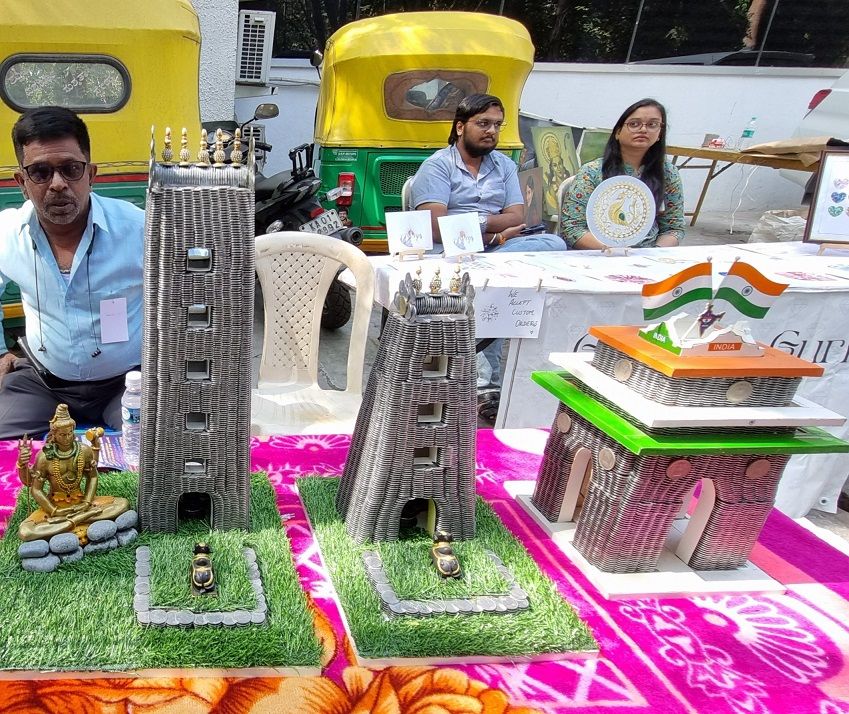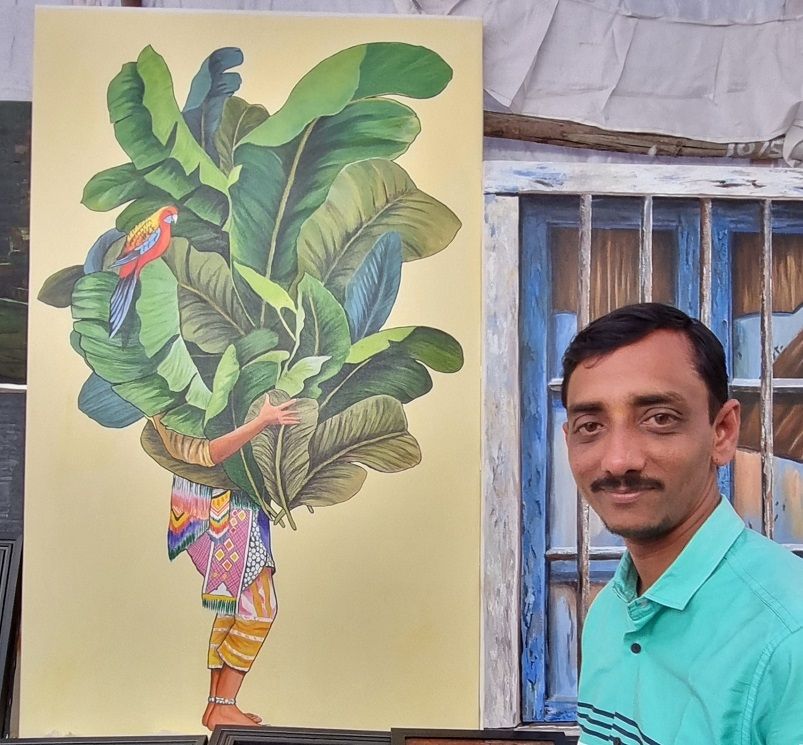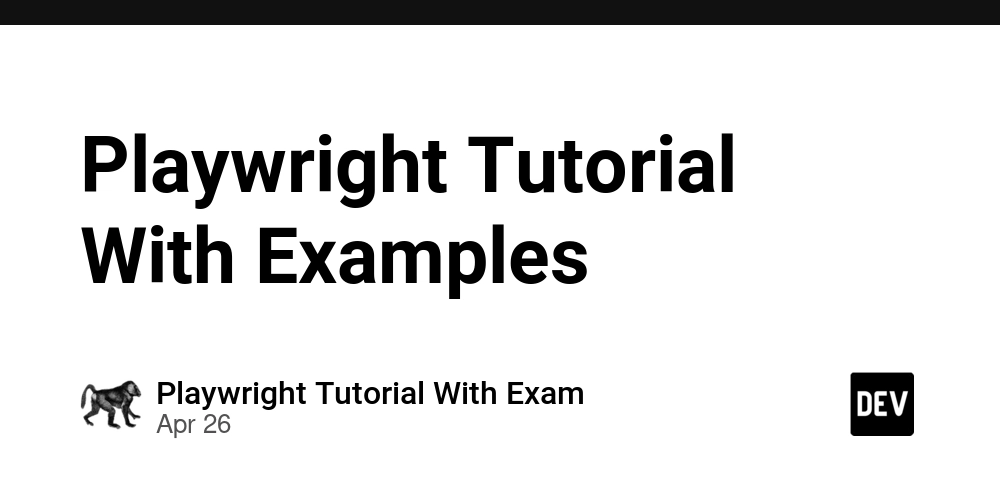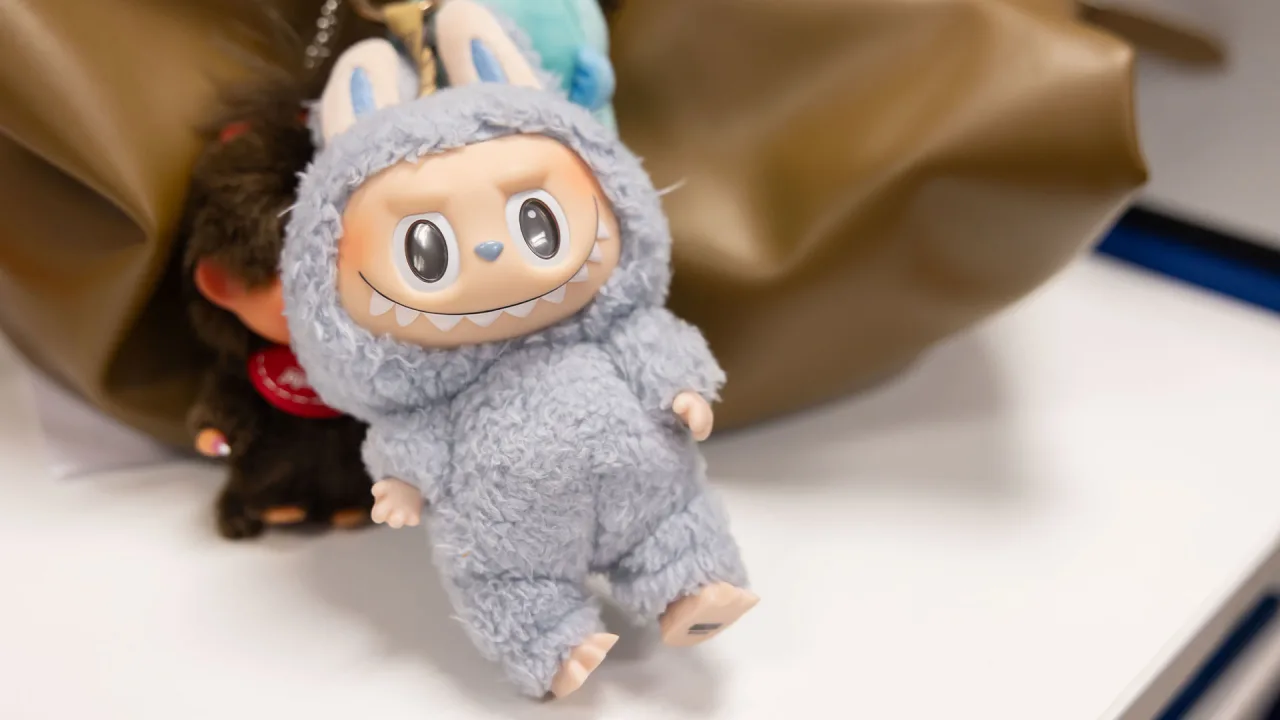How artists learn from failure–perspectives and tips from five creators
In this photo essay series from Bengaluru, we showcase creative highlights and tips from one of India’s largest street fairs for art.


Launched in 2014, PhotoSparks is a weekly feature from YourStory, with photographs that celebrate the spirit of creativity and innovation. In the earlier 865 posts, we featured an art festival, cartoon gallery. world music festival, telecom expo, millets fair, climate change expo, wildlife conference, startup festival, Diwali rangoli, and jazz festival.
India is buzzing with the creative energy of startups, artists, designers, and crafts communities. A number of events, exhibitions and festivals showcase their work, but the creator’s journey is not without its ups and downs.
Insights and tips on bouncing back from failure are shared in this photo essay by five artists who exhibited at the Chitra Santhe art fair, regarded as one of India’s largest annual street celebrations of art. See our coverage of ten earlier editions of this festival, organised by Bengaluru’s Karnataka Chitrakala Parishath. 
“Artists are labelled as ‘troubled’ and ‘struggling’ for a reason – it is not easy. Mistakes and failures do happen, but artists should never stop trying,” painter Jyoti Machigad tells YourStory.
“All good things take time. You just need to have faith in yourself and your abilities, and that includes the ability to learn from your mistakes,” she affirms.
One such mistake she recalls from her early exhibitions was in price setting. “As an artist with a growing brand, making sales to expand my business is very important. I initially made the mistake of overpricing my paintings or misjudging the demand for different types of art,” she says.
At her first art fair, she realised that crowds are very diverse. “I had worked on a lot of big, intricate paintings that I was looking forward to selling. But that did not happen because most people do not come to an art festival with the intent of spending thousands of rupees on paintings,” Machigad explains.
“For my subsequent exhibitions and art fests, I made it a point to make smaller, more affordably-priced paintings to be able to cater to crowds from all strata,” she explains.
Failures are part of the process in any field. “For a short duration, they do create self-doubt and hamper confidence. When self-doubt crawls in for an artist, the mind wanders and originality get compromised,” Shaivya Rastogi cautions.
Failures and mistakes should be regarded as an inherent part of the learning curve. “They help mature a creator’s art form. It really helps to be a constant critique of one’s own work by actively analysing the quality of work and acknowledging what went wrong and where,” she adds.
For Vanishree Siddarth, art is a form of devotion and inspiration that boosts creativity and self-expression. “In this journey, mistakes are part of the learning process for all of us. However, we must know that each flaw is another step towards skillful results,” she observes.
“Do not be afraid of failure, for it is often the greatest teacher. Build a support network of like-minded individuals who inspire you through tough times,” Poonam KS advises. 
The five artists also share a range of tips and advice for aspiring creators on vision, perseverance and marketing. For example, it is important to take part in festivals and exhibitions for visibility, sales, networking, and learning.
“There were at least twenty different buyers who remembered me and my art work from last year’s Chitra Sante,” Rastogi recalls. Such recognition gives her much joy, way beyond what sales may bring.
“Be bold, do work which truly belongs to you. There will be a set of people who will form a connection to your work. Focus on the art that makes you happy and works for you, without worrying about what is trending,” she adds.
Festivals like Chitra Santhe are effective for sharing art with a diverse audience. “People have always been impressed with my work. I have made good sales and it has been a profitable experience,” Siddharth recalls.
“If you love art, keep pursuing it. You will reach a point where you can look back at your work with pride,” she suggests.
Exhibiting at festivals is a good experience for artists, buyers and the public, according to Machigad. “I especially received a lot of attention for my Ramayana painting. Small kids were quizzed by their parents about the epic, and to my surprise, even children around three years old knew the stories,” she recalls with delight.
In addition to sales, she benefited from valuable learnings. “One of the many lessons for me is to focus on a specific theme or genre for my paintings at specific events,” Machigad says.
She urges aspiring artists to never give up. “The first few months, or even years, will be very slow and it may feel like your art is not being appreciated,” she cautions.
“But ride the wave out and find your niche. Find the style of art that suits you best and hone your skills. At the same time, do not be afraid to explore and learn new things,” she adds.
Meher observes that Chitra Santhe caters to artists across all categories, including professionals, hobbyists and students. “My advice to aspiring artists is to focus on creating quality work. Participating in exhibitions is a valuable experience that can open many doors,” she suggests.
“Chitra Santhe was an incredible experience, both humbling and inspiring. It was the conversations, the shared passion for art, and the sense of community that made it special,” Poonam recalls.
Her pieces resonated well with people from different walks of life. “As for sales, I was delighted to find that several of my works found new homes, which was a truly fulfilling experience,” she adds with pride.
“To aspiring artists, my advice is simple: stay true to your vision, never stop learning, and embrace every part of the process. Art is a journey, not a destination, and it is important to be patient with yourself,” she says.
Art is a personal expression, and there will always be room for unique voices. “Make time for your creativity every day, even if it is just a few minutes. Consistency is key,” Poonam signs off.
Now what have you done today to pause in your busy schedule and harness your creative side for a better world? Kavita Katte Sangmesh Chillshetty Prashant Barad











(All photographs were taken by Madanmohan Rao on location at Chitra Santhe.)
Edited by Megha Reddy










































































































































































![[The AI Show Episode 144]: ChatGPT’s New Memory, Shopify CEO’s Leaked “AI First” Memo, Google Cloud Next Releases, o3 and o4-mini Coming Soon & Llama 4’s Rocky Launch](https://www.marketingaiinstitute.com/hubfs/ep%20144%20cover.png)


















































































































































































.jpg?width=1920&height=1920&fit=bounds&quality=70&format=jpg&auto=webp#)























































































_Olekcii_Mach_Alamy.jpg?width=1280&auto=webp&quality=80&disable=upscale#)















































































































![Apple Drops New Immersive Adventure Episode for Vision Pro: 'Hill Climb' [Video]](https://www.iclarified.com/images/news/97133/97133/97133-640.jpg)

![Most iPhones Sold in the U.S. Will Be Made in India by 2026 [Report]](https://www.iclarified.com/images/news/97130/97130/97130-640.jpg)
![Apple to Shift Robotics Unit From AI Division to Hardware Engineering [Report]](https://www.iclarified.com/images/news/97128/97128/97128-640.jpg)

































































































































